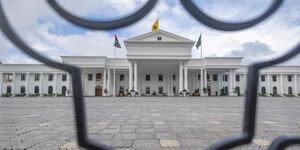The Market Perceptions Survey by the Central Bank of Kenya (CBK) has revealed that the Kenyan shilling is set to remain stable against the greenback for the next two months.
The survey highlighted two major reasons that would fuel the shilling’s stability despite the various risks posed by the Donald Trump administration as well as global geopolitics.
Firstly, respondents expected support for the shilling to come from the adequate forex reserves, which serve as a buffer against any short-term shocks in the foreign exchange market.
Additionally, low international fuel prices and inflows from diaspora remittances and agro-exports were expected to support the shilling. This is despite a slow diaspora remittance in March.
High forex reserves boost confidence, support interventions, and reduce volatility, while low fuel prices lower inflation and dollar demand, thus improving trade balance. Diaspora remittances inject steady USD inflow, support forex reserves and lower impact on import demand. Agro-exports earn dollars through trade, hence improving trade balance and strengthening rural economies.
“The survey sought from bank and nonbank private sector firms their expectations regarding the direction of change in the exchange rate of the shilling against the US dollar in April and May 2025,” read the report.
“Respondents expected the exchange rate of the Ksh against the USD to remain largely at the current levels in the next 2 months,” it further went on.
Banks which predicted a stable shilling stood at 61 per cent. Bank respondents foresee the shilling strengthening by 21 per cent. Those who opined that the shilling would weaken stood at 27 per cent.
On the other hand, non-bank representatives who envisaged the shilling would be stable came in at 60 per cent. 17 per cent of the representatives predicted that the shilling would strengthen slightly.
Those who anticipated the shilling would weaken slightly came in at 19 per cent. A paltry 2 per cent foresaw the shilling would weaken, while one per cent predicted the shilling would strengthen.
Despite the perceived steadiness of the shilling, whose current exchange rate with the dollar stands at Ksh129.65, the survey disclosed that there were several risks that still posed a threat to a secure shilling.
Risks to the shilling's stability included increased demand from importers and from dividend payments, structural trade deficits with the ongoing global trade wars, and reduced USD inflows owing to tariff measures adopted by the US government.
The ongoing trade tensions occasioned by Trump’s imposition of trade tariffs on many countries across the globe have resulted in most currencies being susceptible to shocks in the global economy. This could lead to weaker currencies, with the shilling no different.
A weaker shilling could be a result of reduced exports to the United States, especially as tariffs make goods from these countries more expensive. Also, trade tensions create uncertainty, leading to capital outflows and currency depreciation, particularly in emerging markets.












